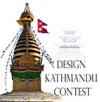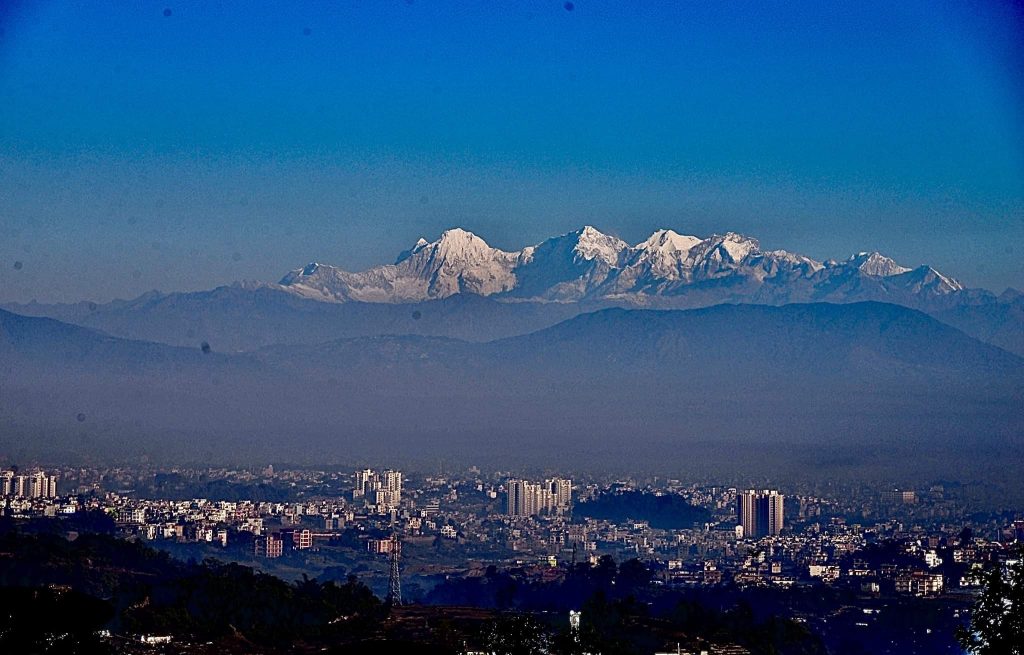Discussion:
Imagine your own Kathmandu. How would you want it to be like? Don’t you dream you had the power to fix everything and make it perfect? Then this is your time, and we provide you the platform.
Start from the very beginning. Study the area, geographical structure and population of Kathmandu, and give a short report on it. Then you will have the rough idea of what your city should look like. Now literally everything is on your will. You can include as many subtopics and make it interesting. You can put your crazy ideas like building an overhead bridge from Baneshwor to Ghantaghar or building a green park in Gaushala. You can put a big Bagmati purifying house and restore pure water back. However, it is better if you can justify your ideas with some logical arguments. Overall, the submission can be up to 15 pages with multiple subheadings and at least two artworks.
For the motivation of your project, here is the essay written by Ujwal Thapa and Raj Maharjan on Kathmandu dreams which was published on Republica:
In 2030, many of Kathmandu’s five million-plus residents will live in residential zones on the outskirts of the old Ring Road. Kathmandu will have transformed into an energy-plus city
It is 2030. As I and my partner arrive at Tribhuvan International Airport after a decade abroad, we can’t help but be amazed when we peek through the airplane window as we land. Kathmandu, which only a decade was a sore in the eye from the air, seems to have transformed into a well-planned, organized and beautiful city. We soon exit the airport terminal through a breathtaking mural gateway depicting the cultural diversity of Nepal. The plethora of random shops from the 1990s in the vicinity of the airport have long been replaced with recreational parks, children’s playground, airport accommodation and other medium and small commercial outlets catering to the needs of national and international passengers as well as local residents.
The land use zoning laws of Vision Kathmandu 2016 Act, promulgated by the local government of the Greater Kathmandu Region has finally prevailed over the haphazard chaos and anarchy of the decades before. The international airport area has been designated as a ‘strategic zone’ whereas Baneshwor area has been turned into a ‘principal residential zone’. As we move towards the Pashupatinath temple, we enter the “cultural zone”. Because of its World Heritage designation by the UN, the haphazard houses built to cater to its devotees in the early 2000s have long since been replaced with systemized accommodation.
There are now commercial outlet buildings that not only match but also enhance the unique architecture of Pashupatinath temple and its spiritual essence. Building owners here received financial and technical incentives from the local government to rebuild and maintain the heritage outlook of their properties.
As our electric taxi cruises alongside the holy Bagmati river, (designated the “nature zone”) we cannot help notice that the banks of the river are now filled with recreational parks to cater to the need of young and old alike. Children’s parks with swings and other play equipments alternate with sport parks where multitudes of teenagers are playing with cricket bats, footballs and skate boards. Flower gardens with varieties from all over Nepal are favorite hang-outs for the senior citizens and young lovers. The street signs are written in four languages—Nepali, Newari, English and Mandarin. There are cafés along the river where people are enjoying the sound of flowing water and the scenery of the holy shrines in the background.
Then we enter the area designated as “strategic zone”—the Singha Durbar complex where the country’s parliament and government building as well as judiciary complexes are located. The whole of Singha Durbar has been restored to look like the cultural mosaic the country represents.
Soon we arrive at the ‘commercial zone’, the business hub of Kathmandu, where the booming financial institutions are based. The buildings in the business district are compact and tall for efficiency of space. An architectural wonder-monument inspired by Dharahara now aptly called Dharahara 2 stands tall and proud. This tallest built structure in Nepal pays homage to the victims and survivors of devastating earthquakes of 2015. D2 becomes the point of reference for the new-comers to the city. High rise buildings and towers like this as well as every other structure are now earthquake resistant. Older buildings have been retrofitted to strengthen and make them earthquake resistant. Earthquake resilience is now a non-negotiable part of any new construction or old buildings, not only in Kathmandu but also in the rest of the country.
The universities in Kathmandu have vibrant research going on to develop cutting-edge technologies in earthquake resilience and architectures that seem to blend in well with our heritage.
As we come to the posh Basantapur area (heritage zone) we are amazed that all the new buildings with centuries old heritage architecture have long replaced the obnoxious commercialization and haphazard concrete boxes built in the early 21st century and the roads are completely vehicle free during the days. The private buildings are strictly required to synergize with the heritage monuments of Basantapur Durbar Square that has UNESCO World Heritage Sites status.
This has been made possible after a series of delicate negotiations between the local government leaders and the property owners. The essence of a deeply spiritual, harmonious and entrepreneurial lives of craftsmen and traders of centuries old, now relives in the greater Basantapur area where it has become a center of “Wanderlust” where anyone who wants to get lost in time travel can do so for days. An entire kilometer radius of the surrounding area has been transformed into an open heritage museum. This whole ‘restoration’ has made it one of the most expensive real estates in South Asia.
As we near the organic farm, we had invested in while living overseas, in Chandragiri we pass through Kalanki area which a decade ago was infamous for its obnoxious dusty and cranky environment. We are elated to find it transformed into a ‘mixed purpose zone’, a hybrid for residential and commercial activities. Here, buildings on the road frontage have commercial use on the ground and first floor. Floors above are used for residential purpose. People in this area are happy that they get to live, work and play within a close distance. The area has higher density of buildings that are either attached or close to each other. To compensate for this high density, large parks are there.
In 2030, much of Kathmandu’s five million-plus residents live in residential zones on the outskirts of the old Ring Road. The residents are proud that their smart domestic alternate energy grids contribute their surplus energy to the national grid. Thanks to the citizens themselves, Kathmandu has transformed into an energy-plus city. I still recall the dark ages of Kathmandu when it was battling with 14 hours of load shedding one and half decades ago. A new Ring Road connects the newly developed residential areas at the foothills of the mountains with the older residential areas and business hubs located within old Ring Road.
I inquire with taxi driver and find that new areas and the city hub as well as older parts of the city are well-connected with reliable public transports that runs on clean energy and is run under collaboration between the city and local social entrepreneurs through public-private partnership (PPP), which has greatly reduced resident’s reliance on private vehicles. The driver also informs us that all of the roads outside the new Ring Road and most within now have bicycle tracks. He advises us to bike along the green paved cycle tracks.
The Greater Kathmandu Metro System (GKMS), the pride and joy of public transport of Kathmandu, is in its final stage of completion. Part of it is already under operation. GKMS is an exemplary PPP project funded partly by locals and expatriate Nepalis. It is a symbol of the contemporary progress this city has achieved in the recent times.
The high-speed metro is a hybrid of sub-ground and over the ground tracks owing to the geological complexity of the valley. GKMS not only connects major business hubs and the residential areas within the valley but also spreads across the regions outside Greater Kathmandu Region. The plan is to extend to Hetauda and beyond the borders of Chitwan National Park connecting GKMS and national railway grid with the international railway lines in China and India connecting further to the Far-East and West Asia.
We arrive in the outskirts of Chandragiri. All of the mountains above 2000 meters (residents call them hills here) are off limits to development as they have long been a beautiful national park encircling all of Kathmandu Valley from where you can see the panorama of the breathtaking Himalayas. Hence any buildings located at the foothills of the surrounding mountains have to ensure that they are canvassed with greenery.
As our taxi finally stops at our farm lush with greenery, I eagerly step out to find the fresh breeze of Kathmandu greeting me. I must say I look forward to staying for a long time in my wonder-land, my beloved Kathmandu. Maybe we should seriously consider migrating back to Kathmandu.”


